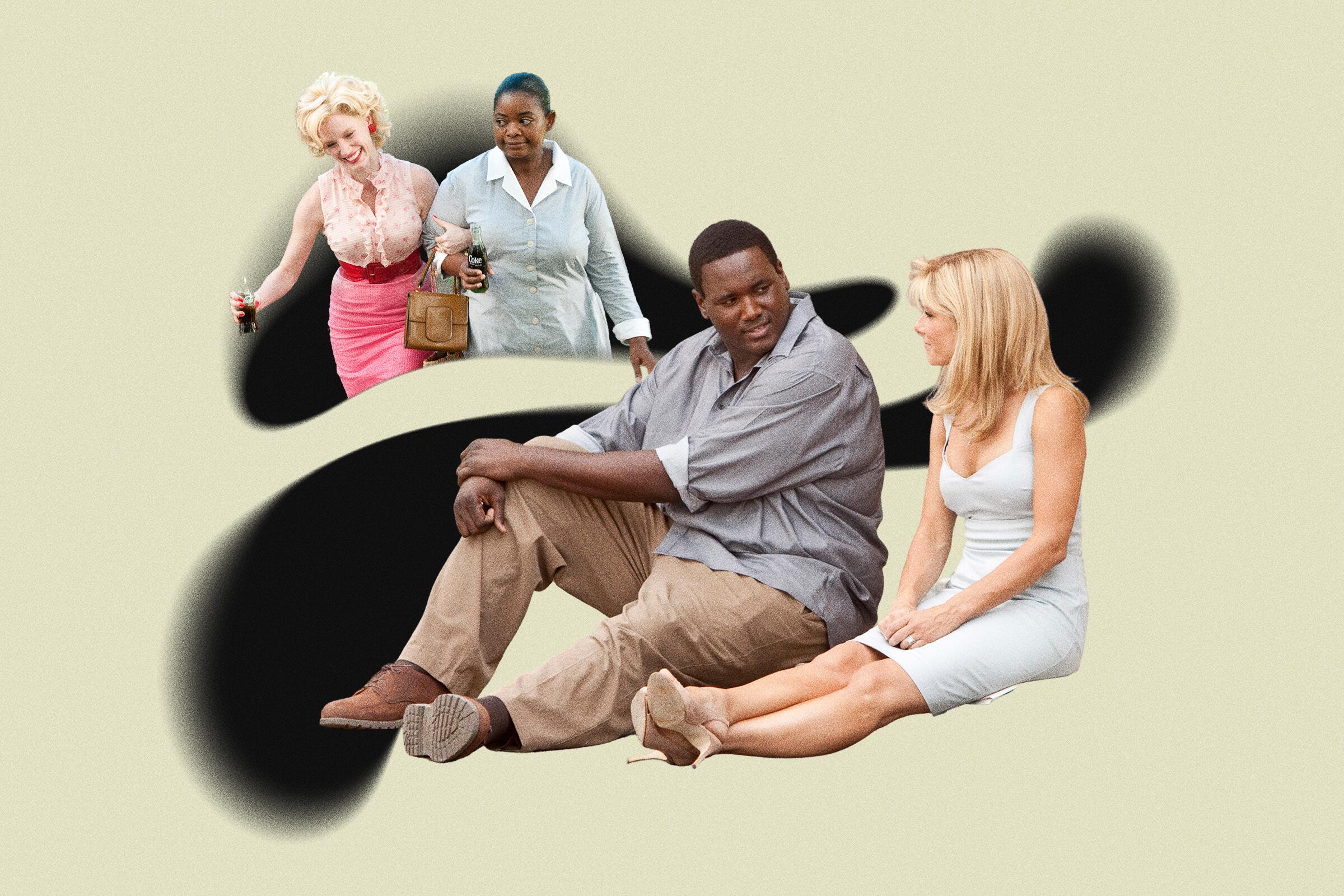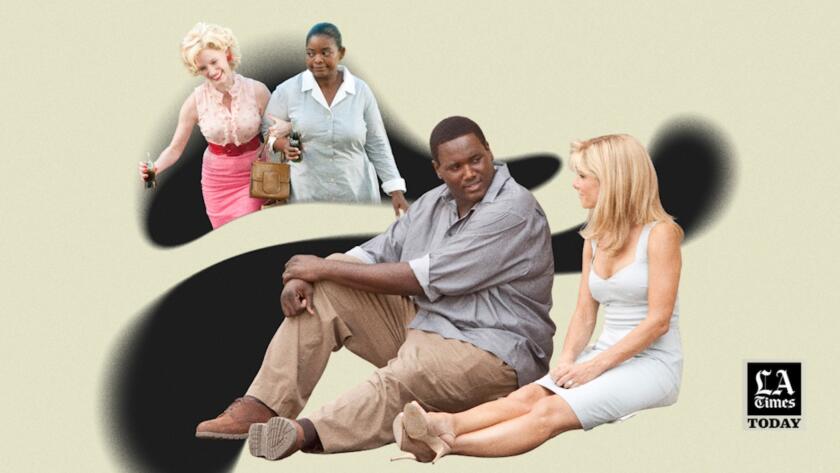A lifelong Los Angeles resident, Greg Braxton has written for the Los Angeles Times for more than three decades. He currently is a staff writer covering television for the Calendar section, and has also written extensively about trends and cultural issues in the entertainment field.
- Share via
1
A homeless Black teen is whisked away from poverty, a drug-addicted mother and a crime-plagued housing project by a wealthy white interior designer. As the plucky businesswoman steers him toward a successful career in college and professional football, he not only becomes a figurative part of the family unit but the angelic family also adopts him.
The story of Michael Oher and his benefactor Leigh Anne Tuohy told in the 2009 film “The Blind Side,” based on Michael Lewis’ 2006 book of the same name, became a Hollywood fairy tale in its own right. Enchanting moviegoers with its message of racial harmony, the film earned more than $250 million at the U.S. box office, scored numerous NAACP Image Award nominations and won Sandra Bullock a lead actress Oscar for her portrayal of Tuohy. Fueling the movie‘s appeal was the belief that it was based on a true story.
“Honey, you’re changing that boy’s life,” one of Tuohy’s wealthy friends tells her with awed admiration. “No,” she responds with a satisfied smile. “He’s changing mine.”
It sounded almost too good to be true. And it turns out it was.

Subscribers get exclusive access to this story
We’re offering L.A. Times subscribers special access to our best journalism. Thank you for your support.
Explore more Subscriber Exclusive content.
The nasty split that erupted last week between Oher and the Tuohy family has propelled “The Blind Side” back into the spotlight 14 years after the film’s release, sparked by the revelation that the Tuohys had not been Oher’s adoptive parents but his conservators.
Oher’s legal filing alleges that Leigh Anne and husband Sean Tuohy tricked him into signing the document establishing the conservatorship and used their power to enrich themselves and their birth children at Oher’s expense; the onetime Baltimore Ravens tackle claims he has not received any money for the use of his name, image and likeness in 19 years.
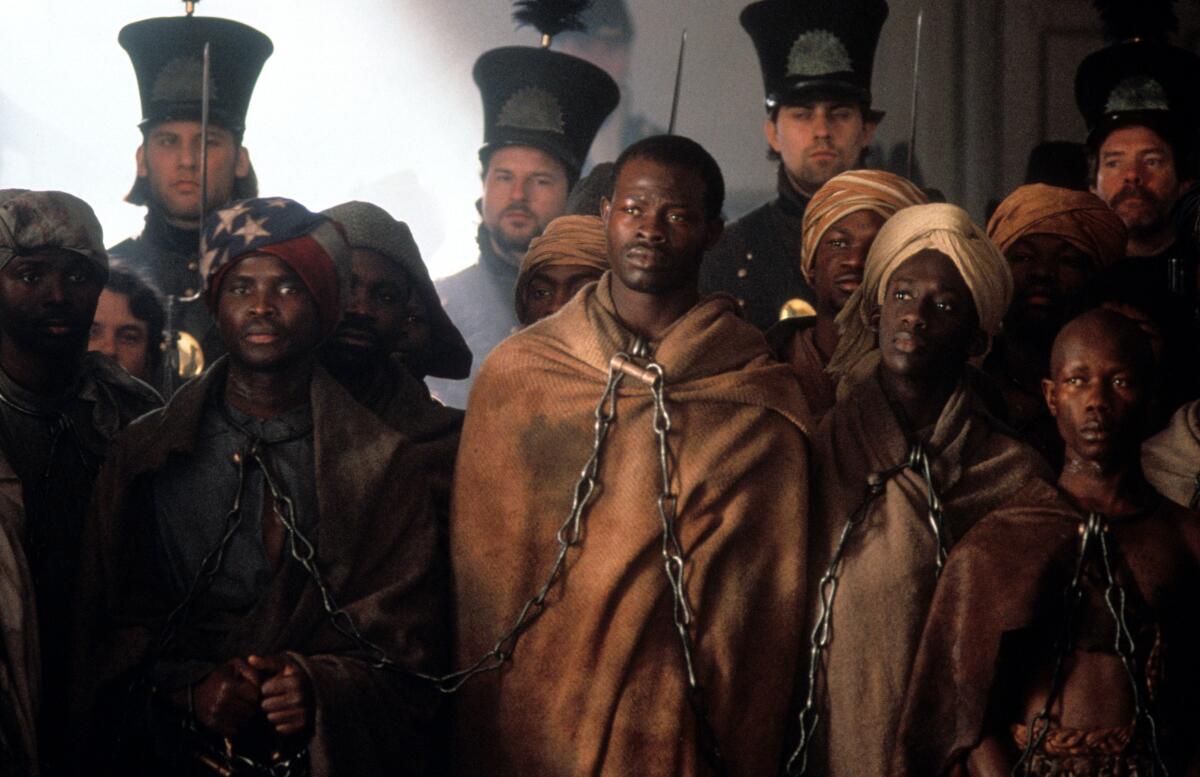
Djimon Hounsou, center, in shackles, in a scene from the film “Amistad.”
(Hulton Archive / Getty Images)
The Tuohys have denied the accusations, and their attorney Martin D. Singer has accused Oher in turn of attempting to shake the couple down for $15 million. They have also said that they plan to end the conservatorship. Producers released a statement Thursday saying that Oher and the four members of the Tuohy family have been paid $767,000 collectively.
But the explosive headlines don’t just raise questions about the authenticity of “The Blind Side.” The renewed focus on the picture, directed by John Lee Hancock, has vindicated those who blasted it at the time of its release as a glaring example of the “white savior” trope. In this tradition, the stories of Black, Indigenous and other people of color are told from the perspective of heroic white characters who swoop in to protect their downtrodden, victimized counterparts and ultimately save the day — often to their own benefit, moral or otherwise.
Dating back decades, the trope anchors several of Hollywood’s most cherished and honored films, including “Lawrence of Arabia,” “To Kill a Mockingbird,” “Glory,” “Dances With Wolves,” “The Help” and “Avatar.”
Also on the roster are “Mississippi Burning,” “Grand Canyon,” “Amistad,” “Billy Jack,” “A Time to Kill,” “Gran Torino” and “Hidden Figures.” The TV slate includes “The White Shadow” and “Game of Thrones.”
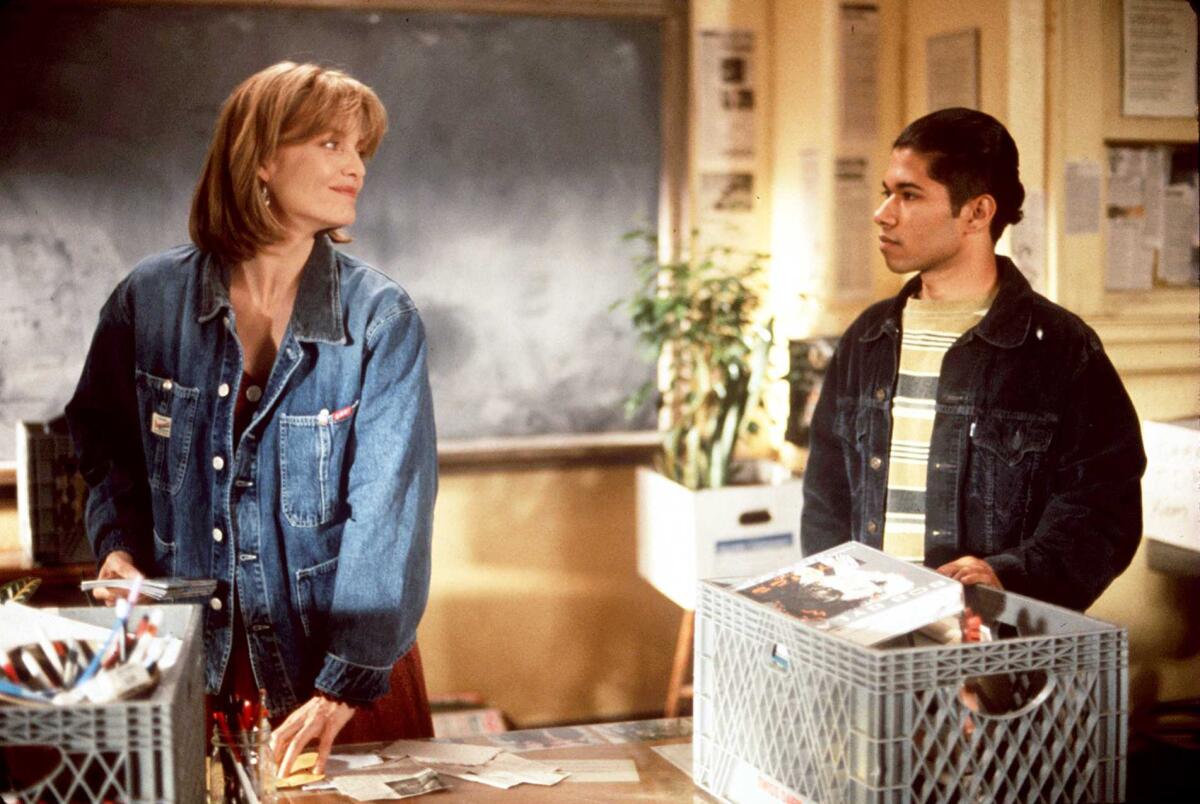
Michele Pfeiffer in “Dangerous Minds.”
(Getty Images)
Claudia Puig, past president of the Los Angeles Film Critics Assn., said she was not surprised by recent developments.
“I’m surprised it’s taken this long, but more power to Michael for demanding what he feels he deserves,” said Puig, who is a regular contributor to National Public Radio’s “FilmWeek.” “The white savior elements in ‘The Blind Side’ are pretty egregious. That movie is self-serving and patronizing at best, and racist at worst.”
Indeed, Oher himself complained in a 2015 interview that “The Blind Side” belittled and misrepresented him, damaging his pro football career. “People look at me, and they take things away from me because of a movie,” he said. “They don’t really see the skills and the kind of player I am.”
“The Blind Side,” released during the first year of Barack Obama’s presidency, may seem like the distant past. But Hollywood’s embrace of similar fantasies about a colorblind America is unlikely to end anytime soon.
“We all believed we lived in this post-racial era,” said Erin Ash, a professor of communications at Clemson University who specializes in media portrayals of race and gender. “‘Green Book’ was an example of how these tropes are repeated because they resonate culturally.”
“Hollywood likes to present itself as being this open-minded, liberal place,” Puig noted. “But there are white people at the top making these movies and not realizing the more insulting aspects of what they’re doing. Or they just don’t care.”
The uproar in 2019 over the buddy dramedy “Green Book” winning the Oscar for best picture may have slowed the white savior wave, but Hollywood shows few signs of abandoning the trope altogether. The more recent afterlives of “The Blind Side” and “The Help,” as well as the development of highly anticipated fall release “Killers of the Flower Moon,” point to the tenacity of the trope’s appeal to viewers — an appeal that seems unlikely to diminish at a moment of widespread attacks on the teaching of racial injustice in U.S. history and other forms of so-called wokeism.
Projects featuring “white saviors” are overwhelmingly produced by white filmmakers, who are usually motivated by a desire to condemn racism and often inspired by true accounts. By centering white characters, however, many such stories stifle their well-intentioned messages, if not counteract them entirely.
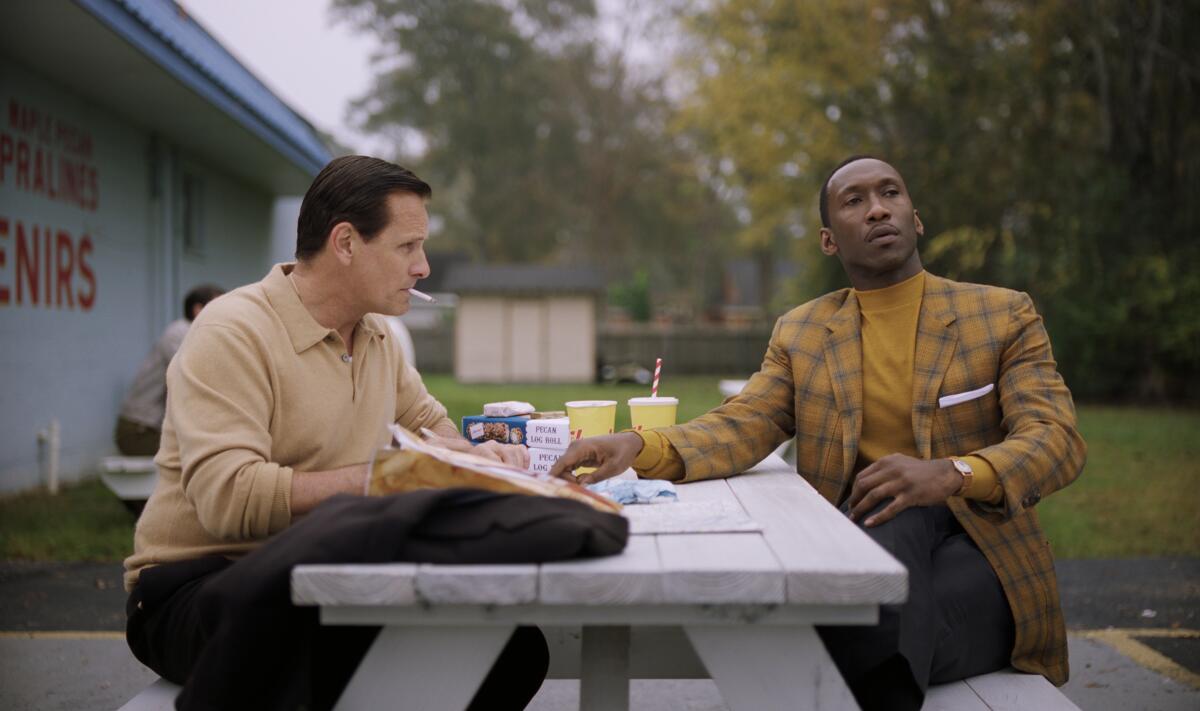
Viggo Mortensen as Tony Vallelonga and Mahershala Ali as Dr. Don Shirley in “Green Book.”
(Universal Pictures / Participant)
Tim Cogshell, another “FilmWeek” regular, recalls being upset when he reviewed the 1996 film “Ghosts of Mississippi,” which revolves around Bobby DeLaughter (Alec Baldwin), the assistant district attorney investigating the murder of civil rights activist Medgar Evers. That film was directed by Rob Reiner and co-starred Whoopi Goldberg as Evers’ widow, Myrlie Evers.
“I remember being a film critic and saying, ‘Somehow a movie about the murder of Medgar Evers winds up being about a white dude,” Cogshell said.
The trope has been deployed so frequently that it can be divided into subcategories. High schools are one common setting, showing white teachers grappling with unruly or failing students of color: “Dangerous Minds,” “The Principal” and “Freedom Writers.” There are also the sports dramas, in which white coaches — often seeking some kind of redemption — transform raw or underperforming Black athletes into champions: “Hardball,” “Glory Road,” “Blue Chips,” “The Air Up There” “Cool Runnings” and “Wildcats.”
Hollywood likes to present itself as being this open-minded, liberal place. But there are white people at the top making these movies and not realizing the more insulting aspects of what they’re doing. Or they just don’t care.
— Claudia Puig, film critic
It’s even been immortalized in parody: In 2019, “Late Night With Seth Meyers” took comedic aim at the trope with the faux trailer for the film “White Savior.” In it, the voice-over narration explains that the movie “has all the things white people love in movies about racism, like that scene in a bar where a white person sticks up for the Black person.”
The trailer ends with a scene from “Rosa & Kevin”: “The Rosa Parks story, told from the perspective of a white guy who rode the bus with Rosa Parks.”
Puig is among industry watchers who felt that the era of the white savior film might have plateaued thanks to the firestorm that followed the Academy of Motion Picture Arts and Sciences awarding best picture to “Green Book.” Although the film was endorsed by prominent Black luminaries such as late civil rights icons Harry Belafonte and John Lewis and music legend Quincy Jones, detractors argued that it used the life of brilliant Black pianist Don Shirley primarily to build up his rough-edged Italian American chauffeur Frank “Tony Lip” Vallelonga. Filmmaker Spike Lee said of the victory that “the ref made a bad call,” and Times film critic Justin Chang called “Green Book” the worst best picture Oscar winner since “Crash.”
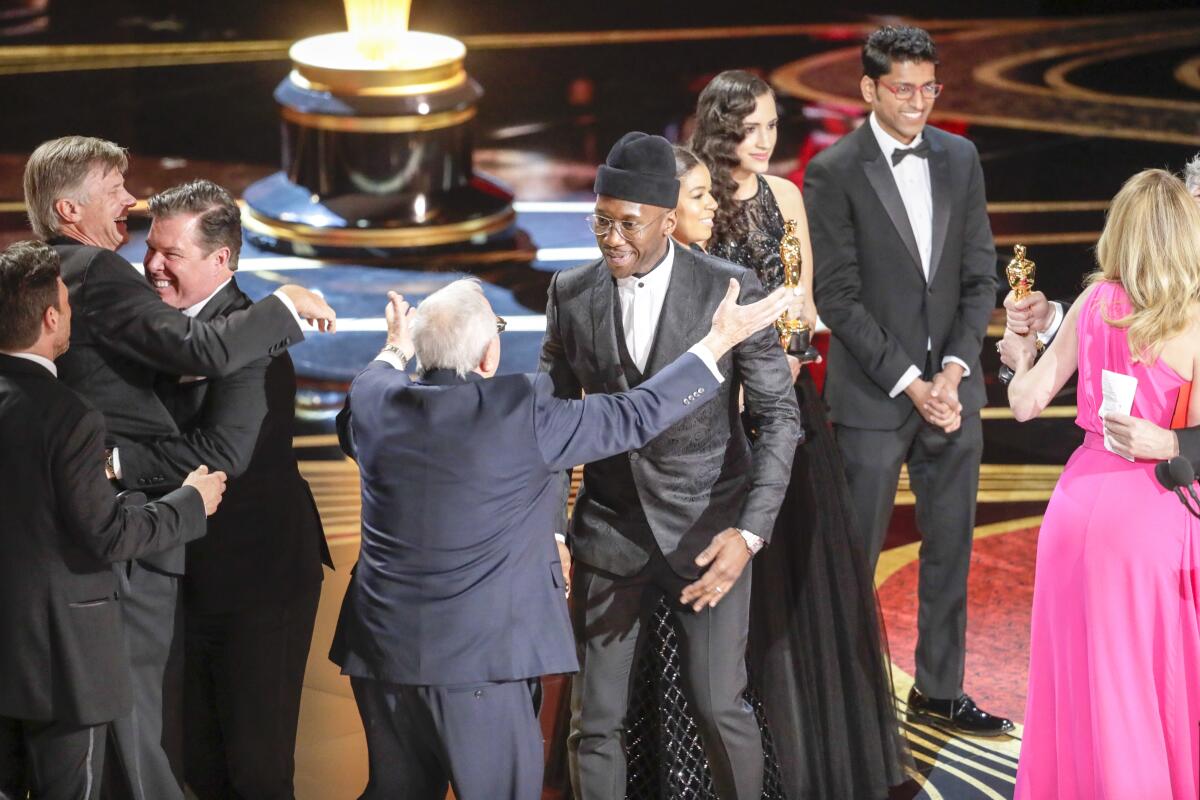
The team behind “Green Book” celebrating its best picture win at the 2019 Academy Awards.
(Robert Gauthier / Los Angeles Times)
Still, even as Hollywood has become more vigilant about its use, the white savior trope remains hard to resist. For instance, Jessica Chastain recently said on an Entertainment Weekly podcast that she would be up for a sequel to “The Help” involving her and Octavia Spencer’s characters — this despite the fact that the original film’s star, Viola Davis, has voiced regret about appearing in it.
“You know who I think about all the time and I just wish I could play her [again]?” Chastain said. “Celia Foote. I just want to do something, Celia and Minny, and see what happened... they were best friends. How amazing would that film be? I loved her, and I got to be a bit silly.”
“The Help,” directed by Tate Taylor and released in 2011, starred Emma Stone as Eugenia “Skeeter” Phelan, an aspiring journalist who sets out to write a book about the Black maids who worked for white families in Mississippi during the civil rights movement. Spencer won a supporting actress Oscar for her role as maid Minny Jackson, who worked for privileged plantation wife Celia Foote, played by Chastain.
Skeeter’s story is central in the film, which highlights the cruelty and brutality waged against the maids by their female employers. Much like “The Blind Side” and “Green Book,” it went on to earn accolades from the film academy, nabbing Oscar nominations for Davis, Chastain and best picture in addition to Spencer’s win.
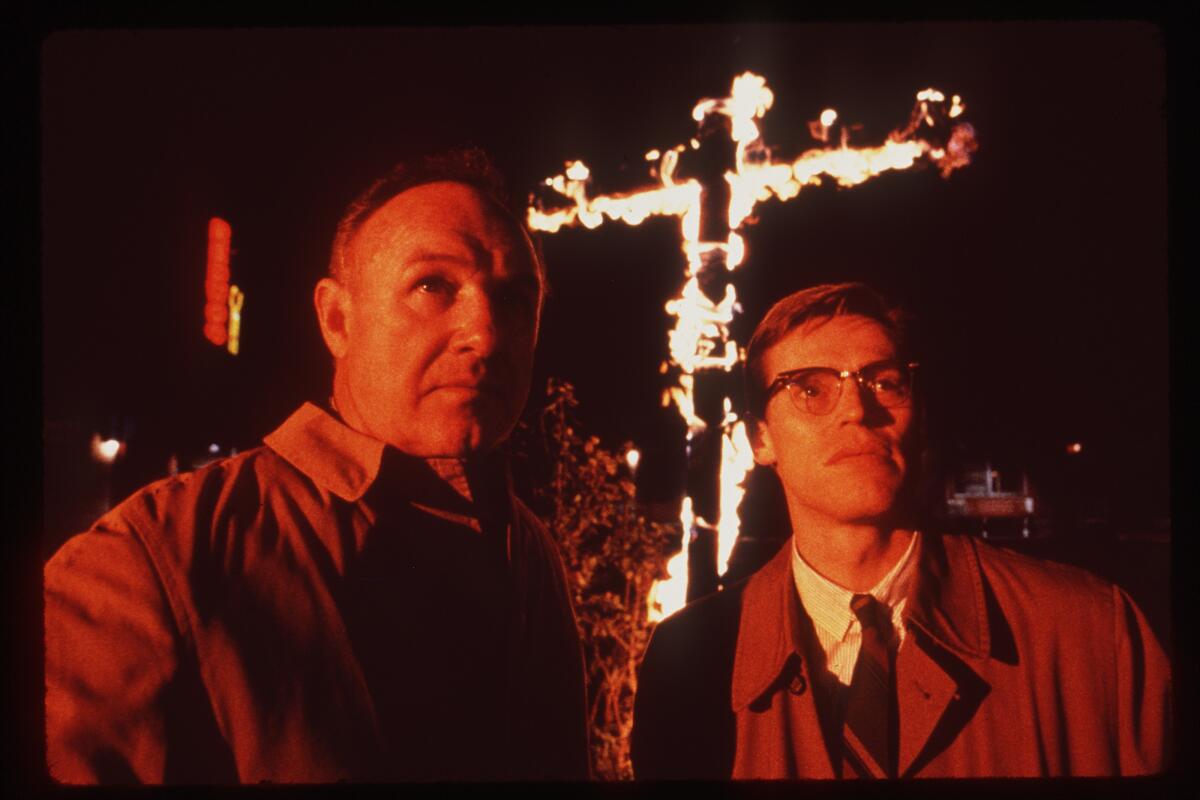
Gene Hackman and Willem Dafoe in “Mississippi Burning.”
(David Appleby / Orion Pictures)
The white savior trope’s enduring appeal to viewers seeking comfort instead of confrontation with America’s racist past was underscored when, in the aftermath of the 2020 murder of George Floyd, “The Help” became the most popular movie streaming on Netflix. Several observers were horrified, saying the film represented the opposite message of the worldwide protests against police violence that followed Floyd’s death.
“Please don’t watch ‘The Help’ to understand this moment we are in,” tweeted Washington Post global opinions editor Karen Attiah. “Or ‘The Green Book’, or ‘Crash’ (ugh).”
Meanwhile, the makers of “Killers of the Flower Moon,” which premiered at the Cannes Film Festival and arrives in theaters in October, have been proactive in their efforts to preempt concerns about the film being labeled a white savior tale.
I remember being a film critic and saying, ‘Somehow a movie about the murder of Medgar Evers winds up being about a white dude.’
— Tim Cogshell, film critic, on “Ghosts of Mississippi”
Directed by Martin Scorsese and starring Robert De Niro and Leonardo DiCaprio, the film, based on the bestselling nonfiction book by David Grann, revolves on the brutal murders of members of the Osage tribe in the 1920s after oil is discovered on the Native Americans’ land.
In production notes distributed to the press, DiCaprio said, “You would read the book and realize it works beautifully, but we ran the risk of telling yet another white-savior story about an FBI agent who comes in and saves the day. It could have fallen into that really easily. David Grann was always very forthright in saying, ‘Look, if you’re going to do a movie about this, it’s important to understand the Osage role in all of this.’”
Instead, the tale is told through the marriage of Ernest Burkhart (DiCaprio), the nephew of De Niro’s cattle rancher, and his Osage wife, Mollie (Lily Gladstone).
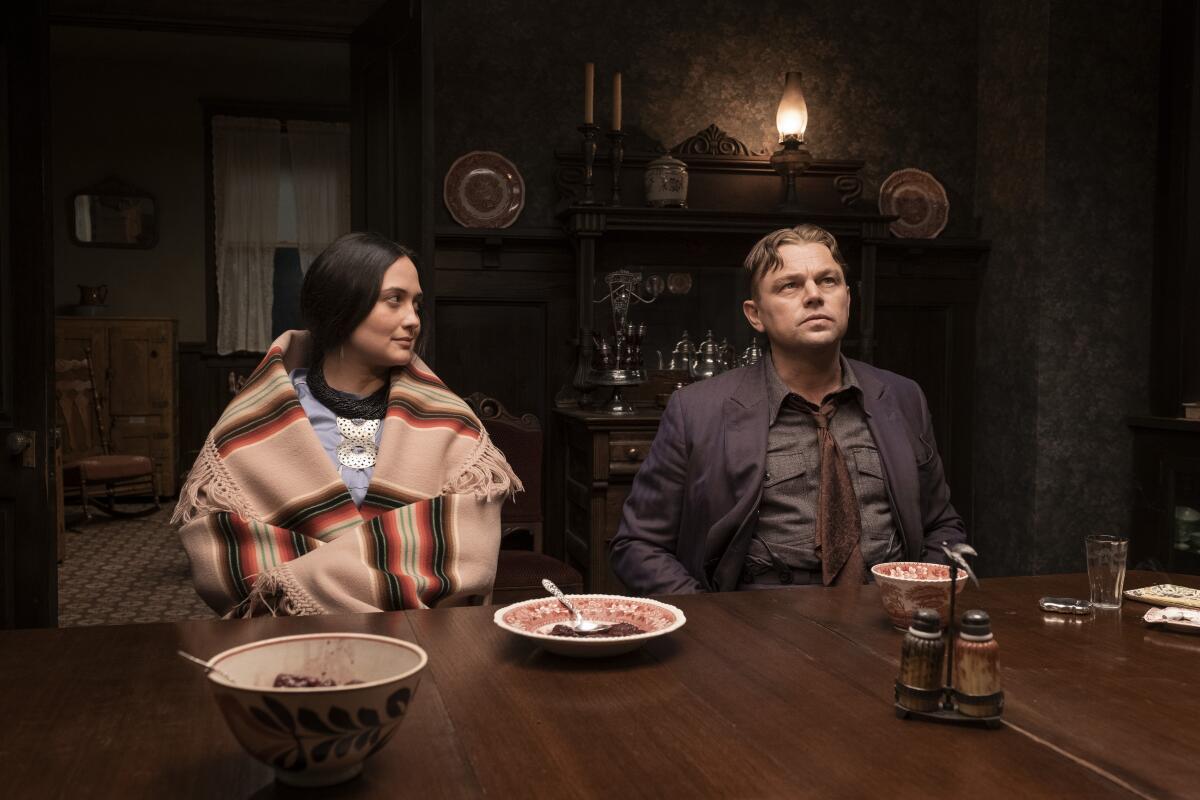
Lily Gladstone and Leonardo DiCaprio in “Killers of the Flower Moon.”
(Melinda Sue Gordon / Apple)
Of course, just because the (predominantly white) creatives behind a film took strides to avoid “another white-savior story” doesn’t mean observers will agree that they succeeded in doing so. As part of a wave of Native American stories onscreen in the last few years, the picture is likely to come under close scrutiny, especially as a number of those pioneering projects have been canceled or will soon end.
Land conflicts between Native Americans and wealthy rancher John Dutton (Kevin Costner) was a major element of the hit series “Yellowstone” in its early seasons. But the focus has since moved away from that dynamic, with more emphasis geared toward plots about the Dutton family and the celebration of cowboy culture.
After receiving critical acclaim, a Peabody Award and two Independent Spirit Awards, “Reservation Dogs,” about a group of mischievous Indigenous teens in rural Oklahoma, will conclude with its third season next month, with “Yellowstone” to follow later this year. Another highly praised comedy centered on Native characters, Peacock’s “Rutherford Falls,” was canceled in 2022 after two seasons.
Hollywood may never decide to give up the white savior once and for all, but controversies like the one around “The Blind Side” are a reminder that changing cultural mores around the trope mean there’s a potentially high price to be paid, at least in the form of bad press.
“I feel there’s a lot more focus on it now, a lot more scrutiny,” Puig said. “We hear that they may go back and make more movies like the sequel to ‘The Help.’ But hopefully, Hollywood is paying a lot more attention and avoiding these wince-inducing kinds of films.”
- Share via
Watch L.A. Times Today at 7 p.m. on Spectrum News 1 on Channel 1 or live stream on the Spectrum News App. Palos Verdes Peninsula and Orange County viewers can watch on Cox Systems on channel 99.
